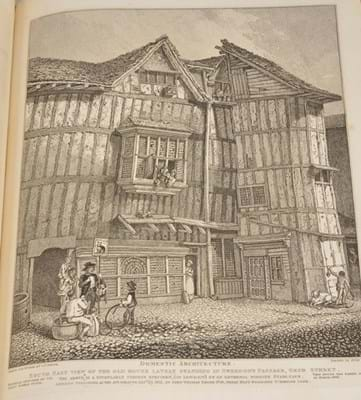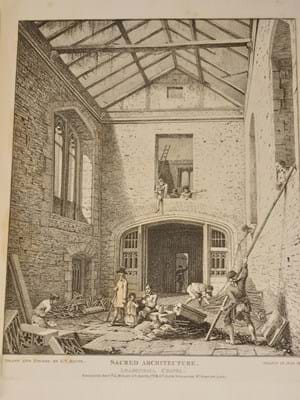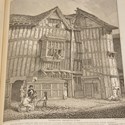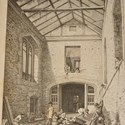His nickname of ‘Antiquity Smith’ derives from the many illustrated works he produced on the city of his birth – its history, its buildings and its people.
One of his works was The Ancient Topography of London of 1815 and a copy of this is to be auctioned next month.
Its extended title promises that it embraces: “Specimens of Sacred, Public and Domestic Architecture, from the earliest Period to the time of the Great Fire, 1666. Containing Not Only Views of Buildings, which in many instances no longer exist and for the most part were never before published but some account of places and customs either unknown, or overlooked by the London Historians.”
Containing 33 engraved plates that were both drawn and etched by Smith – two pictured here – this is a work that would normally make only two or three hundred pounds at auction, but a copy to be offered by Catherine Southon of Selsdon, Surrey on September 6 has added royal appeal and, it is hoped, might make as much as £500.
Described as a large paper copy with proof plates, it bears a label describing it as formerly in the library of Princess Elizabeth, a daughter of George III, and is signed ‘Eliza’ on the title-page.
The king’s seventh child, Eliza is said to have had an affair and a child of her own while still in her teenage years, but it was not until she was 48 that she finally married Frederick VI, Landgrave of Hesse-Homburg, and moved to Germany.
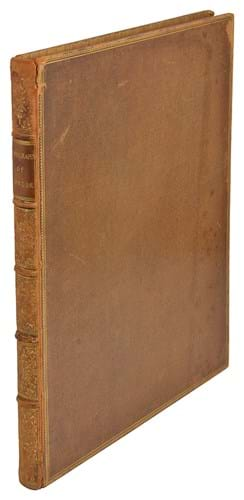
The binding of 'The Ancient Topography of London', showing some scuffing as well as slight ‘ripple’, foxing and yellowing to its pages.
Portrait painter, sightseer, writer, gossip, and keeper of prints and drawings at the British Museum, is how Smith is summed up in the monumental Cambridge History of English and American Literature. That entry also notes: “He had a keen curiosity about things and people past and present, a retentive memory and a gift for gossip; and his Book for a Rainy Day..., [first published some years after his death, in 1845] is one of the most entertaining and most trustworthy memorials of his period.”
Smith’s biography of the sculptor Joseph Nollekens, for whom his father had worked as chief assistant and under whom he also briefly studied as a young man, has been described as “unmatched for malicious candour and vivid detail”.


